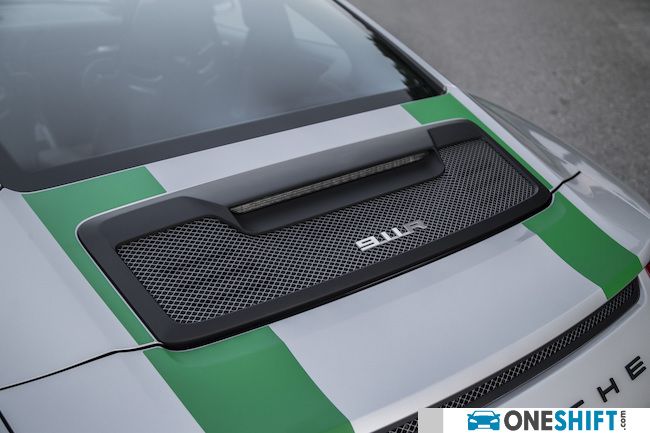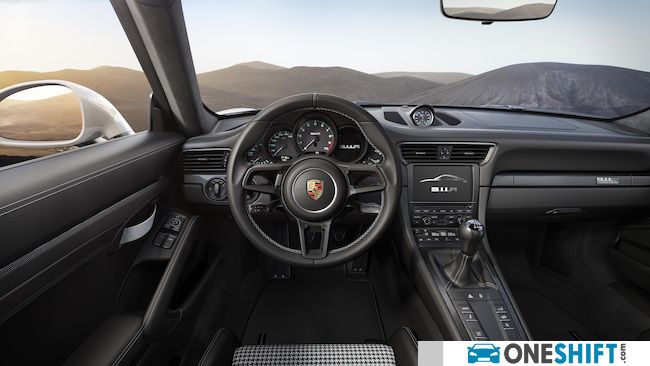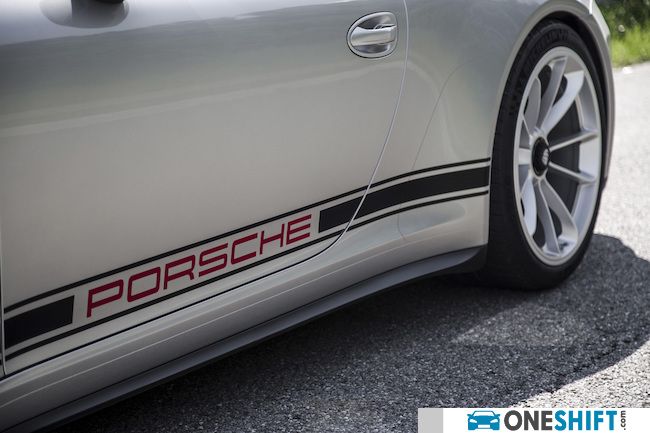The Porsche 911 R - When Pure is Better than Good Enough!
With its new 911 R, Porsche is unveiling a puristic sports car in classical design at the 2016 Geneva International Motor Show. Its 368 kW (500 hp) four-litre naturally aspirated flat engine and six-speed sports transmission places the 911 R firmly in the tradition of its historic role model: a road-homologated racing car from 1967. Produced as part of a limited production series, the 911 R (R for Racing) performed in rallies, in the Targa Florio and in world record runs. Like its legendary predecessor, the new 911 R relies on systematic lightweight construction, maximum performance and an unfiltered driving experience: this special limited-edition model of 991 units has an overall weight of 1,370 kilograms and is currently the lightest version of the 911. With the high-revving six-cylinder naturally aspirated engine and manual sports transmission, Porsche is once again displaying its commitment to especially emotional high-performance sports cars. Developed in the motorsport workshop, the 911 R extends the spectrum of high-performance naturally aspirated engines alongside the motor racing models 911 GT3 and 911 GT3 RS.


With its new 911 R, Porsche is unveiling a puristic sports car in classical design at the 2016 Geneva International Motor Show. Its 368 kW (500 hp) four-litre naturally aspirated flat engine and six-speed sports transmission places the 911 R firmly in the tradition of its historic role model: a road-homologated racing car from 1967. Produced as part of a limited production series, the 911 R (R for Racing) performed in rallies, in the Targa Florio and in world record runs. Like its legendary predecessor, the new 911 R relies on systematic lightweight construction, maximum performance and an unfiltered driving experience: this special limited-edition model of 991 units has an overall weight of 1,370 kilograms and is currently the lightest version of the 911. With the high-revving six-cylinder naturally aspirated engine and manual sports transmission, Porsche is once again displaying its commitment to especially emotional high-performance sports cars. Developed in the motorsport workshop, the 911 R extends the spectrum of high-performance naturally aspirated engines alongside the motor racing models 911 GT3 and 911 GT3 RS.

At work in the rear of the 911 R is the six-cylinder flat engine with a displacement of four litres, familiar from the 911 GT3 RS. The racing engine delivers 500 hp at 8,250 rpm and generates 460 Nm at a speed of 6,250 rpm. From a standing start, the rear-engined car breaks through the 100 km/h barrier in 3.8 seconds. In keeping with the puristic character of the vehicle, the 911 with its lightweight design is available exclusively with a six-speed sports transmission. Short gearshift travel underlines the active driving experience. The forward thrust of the 911 R continues to a speed of 323 km/h. Combined fuel consumption in the NEDC is 13.3 l/100 km.

With its overall weight of 1,370 kilograms, the 911 R undercuts the 911 GT3 RS by 50 kilograms. Bonnet and wings are made of carbon and the roof of magnesium. This reduces the centre of gravity for the vehicle. Rear windscreen and rear side windows consist of lightweight plastic. Additional factors are the reduced insulation in the interior and the omission of a rear bench seat. The optional air conditioning system and the radio including audio system also fell victim to the slimming cure.

From the exterior, the 911 R gives a reserved impression. At first sight, the body resembles that of the Carrera. Merely the nose and rear body familiar from the 911 GT3 hint at the birthplace of the 911 R: namely the motorsport department in Flacht. In technical terms therefore, the 911 R has a lot to show under the bonnet: the drive technology comes from the 911 GT3 RS. All the lightweight components of the body and the complete chassis originate from the 911 GT3. However, with a view to road use, the body manages without the fixed rear wing. Instead, a retractable rear spoiler, familiar from the Carrera models, and a rear underbody diffuser specific to R models provide the necessary downforce. Front and rear apron come from the 911 GT3. The sports exhaust system consists of the lightweight construction material titanium. A redesigned spoiler lip is installed at the front. Porsche logos on the sides of the vehicle and continuous colour stripes in red or green over the entire mid-section of the vehicle show the relationship to its legendary predecessor.

The driver sits in a carbon full bucket seat with fabric centre panels in Pepita tartan design, recalling the first 911 in the 1960s. An “R-specific” GT sport steering wheel with a diameter of 360 millimetres receives steering commands from the driver. Gearshifts take place in traditional manner via an R-specific short gearshift lever and the clutch pedal. Carbon trim strips in the interior with an embedded aluminium badge on the front passenger's side indicate the limited number of the 911 R. A typical feature of GT vehicles are the pull straps as door openers.

Text from Stuttgart Auto
Credits:


Get the Best Price for your used car
from 500+ dealers in 24 hours

- Convenient and Hassle-Free
- Consumer Protection
Transparent Process
With No Obligation








